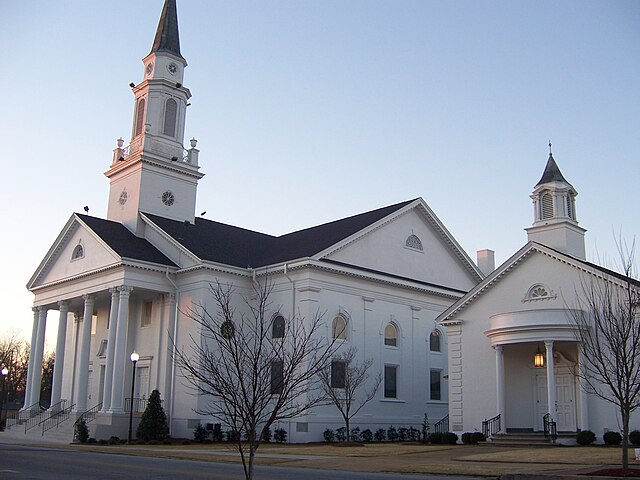Introduction to Opelika’s Climate
Ever wondered what it’s like to experience the weather in Opelika, Alabama? Picture this: a city where the sun shines bright, humidity wraps you like a warm hug, and the occasional storm adds a bit of drama to the forecast. Opelika, nestled in the heart of Lee County, boasts a humid subtropical climate that keeps things interesting year-round. Whether you’re a local planning your next outdoor adventure or a visitor curious about what to pack, understanding Opelika’s weather is key to making the most of your time here. In this guide, we’ll dive into the nitty-gritty of Opelika’s seasonal patterns, monthly weather breakdowns, and practical tips to navigate its ever-changing skies. So, grab a sweet tea, and let’s explore what Mother Nature has in store for Opelika!
What Makes Opelika’s Weather Unique?
Opelika’s weather is like a Southern symphony—warm, vibrant, and occasionally unpredictable. Its humid subtropical climate means hot summers, mild winters, and a generous dose of rainfall throughout the year. But what sets Opelika apart? It’s the blend of balmy days, sudden thunderstorms, and a touch of Southern charm that makes every season feel distinct. The city’s location in east-central Alabama exposes it to Gulf Coast influences, bringing moisture-laden air that fuels those sticky summer days and occasional winter showers. If you’re new to the area, you might be surprised by how quickly the weather can shift—one minute, you’re basking in sunshine; the next, you’re dodging raindrops. Let’s break down what drives this dynamic climate.
Geographical Influences on Opelika’s Weather
Opelika sits at the edge of Alabama’s Piedmont region, where rolling hills meet the Coastal Plain. This geography plays a big role in its weather patterns. The Gulf of Mexico, about 200 miles south, sends warm, moist air northward, keeping humidity levels high and rainfall frequent. Meanwhile, the city’s elevation—around 800 feet—adds a slight twist, making winters a tad cooler than in coastal areas. Ever noticed how the air feels heavier in Opelika than in, say, a desert town? That’s the Gulf’s influence at work, creating a climate that’s lush, green, and full of life. But it also means you’ll want to keep an umbrella handy!
The Role of Seasonal Jet Streams
Jet streams are like invisible rivers in the sky, steering weather systems across the U.S. In Opelika, these high-altitude winds influence everything from summer heatwaves to winter cold snaps. During summer, the jet stream often retreats north, letting warm, humid air dominate. Come winter, it dips south, occasionally bringing chilly fronts from the Arctic. This push-and-pull creates Opelika’s signature mix of mild winters and scorching summers, with spring and fall acting as delightful transitions. Ever wonder why March feels like a weather rollercoaster? Blame the jet stream’s dance with seasonal shifts!
Seasonal Weather Patterns in Opelika

Opelika’s seasons are like chapters in a book—each one tells a different story. From the sultry days of summer to the crisp evenings of fall, understanding these patterns helps you plan everything from barbecues to hiking trips. Let’s take a closer look at what each season brings to this charming Alabama city.
Spring: A Burst of Color and Mild Days
Spring in Opelika is like a breath of fresh air after a sleepy winter. From March to May, temperatures climb from the mid-50s to the low 80s Fahrenheit, with plenty of sunshine to brighten your days. Azaleas and dogwoods bloom, painting the city in vibrant pinks and whites. But don’t get too cozy—spring also brings frequent showers and the occasional thunderstorm. April is particularly rainy, with about 4-5 inches of precipitation. Planning a picnic at Chewacla State Park? Pack a raincoat, just in case!
Tips for Enjoying Spring in Opelika
Spring’s mild temps make it perfect for outdoor activities, but the weather can be fickle. Check the forecast daily, especially if you’re heading to local events like the Opelika Farmers Market. Layered clothing is your friend—mornings can be cool, but afternoons often warm up fast. And if you’re into gardening, spring’s the time to plant, as the soil is moist and temperatures are forgiving.
Summer: Hot, Humid, and Full of Energy
Summer in Opelika is like stepping into a sauna. From June to August, temperatures often hit the high 80s to low 90s, with humidity making it feel even hotter. Think of it as Alabama’s way of testing your love for sweet tea and air conditioning! Afternoon thunderstorms are common, especially in July, which sees about 5 inches of rain. But don’t let the heat scare you—summer’s perfect for cooling off at Lake Harding or catching a concert at the Opelika Amphitheater.
Beating the Summer Heat
Surviving an Opelika summer is all about staying cool. Hydrate like it’s your job, and seek shade during the midday heat. If you’re planning outdoor adventures, aim for early mornings or late evenings when temps are more bearable. And don’t forget sunscreen—UV rays are no joke in Alabama’s summer sun. Got kids? The Opelika SportsPlex and Aquatics Center is a lifesaver for water-based fun.
Fall: Crisp Air and Vibrant Foliage
Fall is Opelika’s golden season. From September to November, temperatures drop from the low 80s to the mid-50s, and humidity eases up, making it ideal for hiking, festivals, or tailgating at nearby Auburn University. The foliage turns into a kaleidoscope of reds, oranges, and yellows, especially around Chewacla State Park. Rainfall dips slightly, but you might still catch a stray shower. Ever wondered why fall feels so perfect? It’s nature’s way of apologizing for summer’s heat!
Fall Activities to Savor
Fall’s mild weather is perfect for exploring Opelika’s historic downtown or attending events like the Oktoberfest at The Depot. Layer up for cooler evenings, especially in November, and keep an eye on the forecast for sudden cold fronts. If you’re a photographer, the fall colors at Tuskegee National Forest are a must-capture.
Winter: Mild with a Chance of Chill
Winter in Opelika is like a light jacket season—mild but with occasional cold snaps. From December to February, highs range from the mid-50s to low 60s, with lows dipping into the 30s. Snow is rare, but you might see a dusting once every few years. Rainfall picks up in winter, with January being one of the wettest months at about 5 inches. Planning a holiday visit? You’ll likely enjoy pleasant days, but pack a sweater for chilly nights.
Winter Survival Tips
Opelika’s winters are forgiving, but indoor activities shine when cold fronts roll in. Check out the Museum of East Alabama for a dose of local history, or cozy up at a downtown café. If you’re braving the outdoors, waterproof boots and a light jacket will keep you comfortable during rainy spells.
Monthly Weather Breakdown for Opelika}

Want a quick snapshot of Opelika’s weather? Here’s a month-by-month guide to help you plan. Each month has its own personality, so let’s break it down.
January to March: Cool and Wet
Early in the year, Opelika sees highs in the mid-50s to low 60s and lows in the 30s. January is particularly rainy, with about 5 inches of precipitation. By March, temps start climbing, and spring blooms begin to pop. Expect occasional thunderstorms as the season transitions.
April to June: Warming Up Fast
April brings highs in the low 70s and plenty of rain—perfect for Opelika’s lush greenery. By June, summer kicks in, with temps soaring into the high 80s and humidity cranking up. Thunderstorms become more frequent, so keep an eye on the sky.
July to September: Peak Heat and Storms
July is Opelika’s hottest month, with highs often hitting 90°F and humidity making it feel like a steam bath. August isn’t much cooler, but by September, temps start to ease into the low 80s. Rainfall peaks in summer, so plan indoor backups for outdoor events.
October to December: Cooling Down
October is a sweet spot, with highs in the mid-70s and crisp evenings. November sees temps drop to the 60s, and by December, winter settles in with highs in the mid-50s. Rainfall remains steady, but cold fronts can bring chilly surprises.
Severe Weather in Opelika: What to Know
Opelika’s weather isn’t always sunshine and rainbows. The city sits in Alabama’s “Dixie Alley,” a region prone to severe weather, especially tornadoes. Spring and fall are peak seasons for severe storms, with March and April being the riskiest months. Hurricanes from the Gulf can also impact Opelika, usually as heavy rain or strong winds. So, how do you stay safe when the skies turn ominous?
Tornado Preparedness
Tornadoes are rare but serious in Opelika. If a warning is issued, head to an interior room on the lowest floor, away from windows. Keep a weather radio or app like NOAA Weather handy for real-time alerts. Ever seen a Southern storm roll in? It’s like nature’s way of saying, “Y’all better hunker down!”
Hurricane Season Tips
Hurricane season (June to November) can bring heavy rain and wind to Opelika, even if the storm makes landfall far away. Stock up on essentials like water, batteries, and non-perishable food. Trim trees around your home to reduce the risk of falling branches. And if flooding’s a concern, know your evacuation routes.
Planning Outdoor Activities Around Opelika’s Weather
Opelika’s weather is a playground for outdoor lovers, but timing is everything. Whether you’re hiking, fishing, or attending a local festival, here’s how to plan around the forecast.
Best Times for Outdoor Adventures
Spring and fall are prime for outdoor activities, with mild temps and stunning scenery. Chewacla State Park is a hotspot for hiking and kayaking, while Lake Harding offers fishing and boating. Summer’s great for water activities, but plan for early mornings to beat the heat. Winter’s mild days are perfect for leisurely walks in downtown Opelika.
Weather-Proofing Your Plans
Always have a Plan B. If rain threatens your barbecue, venues like the Opelika Event Center offer indoor alternatives. Check apps like AccuWeather for hourly forecasts, and pack versatile clothing to handle sudden changes. Ever been caught in a pop-up shower? A lightweight poncho can save the day!
How Weather Impacts Opelika’s Community

Weather shapes more than just your weekend plans—it’s woven into Opelika’s culture. From farmers markets to football games, the climate influences how locals live, work, and play. Agriculture, a big part of Lee County’s economy, relies on Opelika’s rainfall, but too much can flood fields. Events like the Auburn-Opelika Balloon Festival depend on clear skies. Ever noticed how a sunny day brings everyone out to Railroad Avenue? That’s Opelika’s weather at work, fostering community spirit.
Tools and Resources for Tracking Opelika Weather
Staying ahead of Opelika’s weather is easier than ever with the right tools. Apps like Weather Underground and AccuWeather provide detailed forecasts, while the National Weather Service offers severe weather alerts. Local news outlets, like the Opelika Observer, often share updates on major weather events. Want to geek out on weather data? Check out NOAA’s website for historical trends and climate reports.
Conclusion: Embracing Opelika’s Weather
Opelika’s weather is like a good Southern story—full of warmth, surprises, and a touch of drama. From the balmy days of summer to the crisp evenings of fall, this city’s climate offers something for everyone. By understanding its seasonal rhythms, preparing for severe weather, and planning outdoor activities wisely, you can make the most of Opelika’s unique forecast. Whether you’re a lifelong resident or just passing through, let the weather guide your adventures, not dictate them. So, what’s the forecast for your next Opelika day? Grab your sunglasses, maybe an umbrella, and dive into the beauty of this Alabama gem!
Frequently Asked Questions
1. What is the best time of year to visit Opelika?
Spring (March-May) and fall (September-November) are ideal, with mild temperatures and vibrant scenery. These seasons are perfect for outdoor activities like hiking or attending local festivals.
2. How often does it rain in Opelika?
Opelika sees about 50-55 inches of rain annually, with the wettest months being January, April, and July. Always have a rain plan for outdoor events!
3. Does Opelika get snow?
Snow is rare in Opelika, occurring maybe once every few years. When it happens, it’s usually a light dusting, but it’s enough to excite locals!
4. How can I stay safe during tornado season in Opelika?
Monitor weather alerts via apps or a weather radio, and seek shelter in an interior room on the lowest floor during a tornado warning. Stay informed through local news.
5. What should I pack for a trip to Opelika?
Pack layered clothing for spring and fall, lightweight clothes and sunscreen for summer, and a light jacket for winter. An umbrella or poncho is a must year-round!

